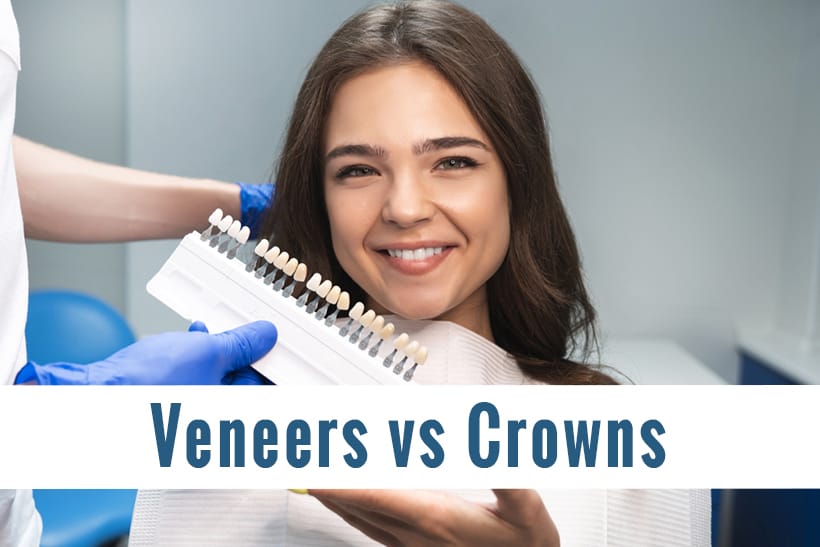 Dentistry has come a long way in the last decade or two. Researchers and dental teams are constantly on the search to improve the dental materials being offered and the dental procedures being performed. Thankfully, all these efforts over the last few decades have greatly benefited patients and consumers all over the world.
Dentistry has come a long way in the last decade or two. Researchers and dental teams are constantly on the search to improve the dental materials being offered and the dental procedures being performed. Thankfully, all these efforts over the last few decades have greatly benefited patients and consumers all over the world.
Now, there are many options available for helping you reach and maintain your best smile. Thankfully, you probably won’t have to be too concerned about whether or not your tooth can be fixed when it comes to treatment. It’s more likely that you will find yourself asking, “Which option is best?”
Two major smile-benefiting procedures in dentistry have been veneers and crowns. These two treatments have many similarities, including steps of tooth prep, impressions, and cementation. They are also different enough from one another in that they can be used to fix different dentistry needs.
What Is A Veneer?
The most significant difference between crowns and veneers is their thickness and how much of the tooth they cover. Veneers are about 1 mm thick, and they are composed of porcelain. Veneers only cover the front surface of a tooth, and they are usually placed on anterior teeth, teeth that are at the front of your mouth.
One great benefit of doing a veneer is that less tooth structure is removed than a crown. Since the veneer only covers the tooth’s front surface, only a thin layer of the tooth must be removed so that the veneer can bond in its place.
What Is A Crown?
Crowns are usually 2 mm thick, and they cover the whole crown of your tooth. Often crowns are composed of porcelain material, but they can also be composed of a porcelain layer baked over a metal substructure (PFM). It is also possible that crowns can be made of a metal alloy. While crowns can be color-matched to your natural teeth, they aren’t usually done solely for cosmetic reasons. They typically serve additional purposes such as replacing tooth structure that has a large cavity.
Which One Is Right For You?
Veneers typically do well on healthy teeth. They are often an excellent choice for fixing teeth that have discoloration or slight chipping. Veneers can even be used to give a slightly different shape to a tooth. In general, veneers are typically used for cosmetic purposes.
On the other hand, crowns are typically used in situations where the tooth is not in ideal health. If a tooth has extensive decay, a root canal, or a large crack, it will likely need a crown.
What Is The Investment Cost?
Veneer and crown cost varies from office to office. Price also can vary depending on what tooth is affected as each tooth is a different size. When looking at the overall comparison between getting a veneer versus a crown, the financial investment between the two is pretty comparable. As a rough estimate, you will probably find that one crown or one veneer will cost somewhere between $1,000 and $2,000.
Crowns and veneers are definitely worth the investment as they help to restore smiles every day. Cost can be one of the biggest concerns, but it is essential to know that there are options available. While porcelain veneers are the best option for the longevity of veneers, composite veneers can also be done.
Composite veneers require less money upfront and their average life span of 5-7 years makes them a more affordable option for some. Also, payment plans are available in the dental office to still get your treatment now and pay later.
Do you have a tooth that could benefit from a crown or veneer? Wait no longer; our dental team is here to help find the best dental solution for you!



Leave a Reply